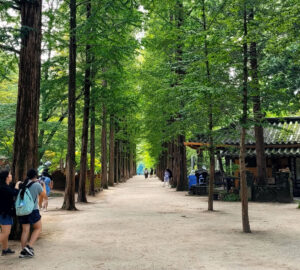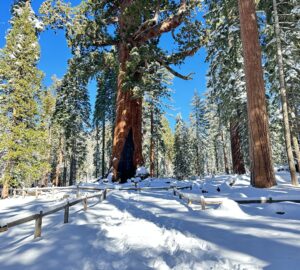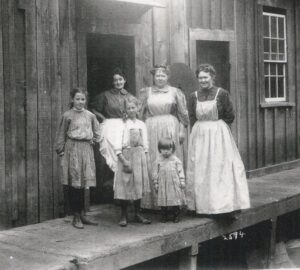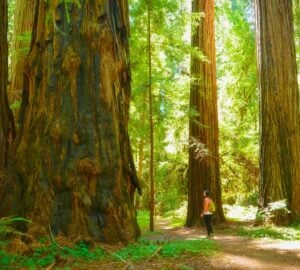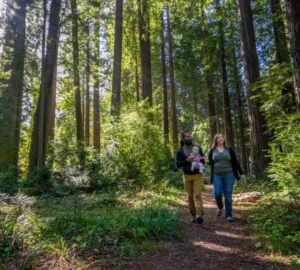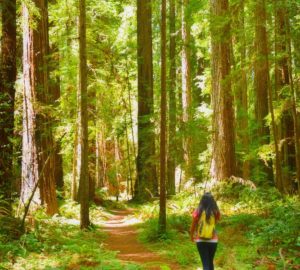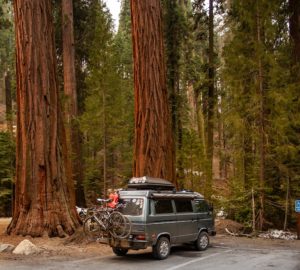For thousands of years, redwood ecosystems thrived with very little interference from humans, aside from the indigenous peoples who treated the woods as sacred spaces. These days, more than 31 million visitors enter our redwood parks each year.
We have amazing access to redwoods in some of the most beautiful parks on Earth. That’s worth protecting, and the best way to do it is to be mindful visitors.
Here’s what you can do to be a good steward while exploring the redwood forest.
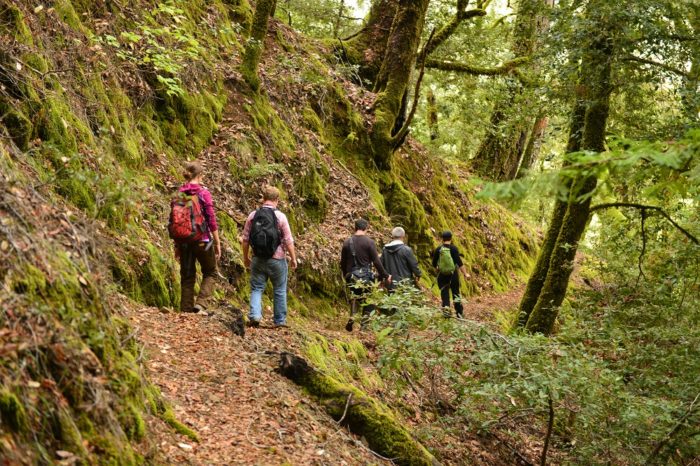
1. Stay on trails
Park trails are designed for two very important reasons: to let us experience the magic of the forest, and to protect sensitive habitats. The coast redwood and giant sequoia forests’ complex ecosystems depend on healthy dynamics between old-growth and young trees, understory plants, fungal and root networks, and soil microbes. Unfortunately, some visitors head off the paths and create what are called social trails to get close to the largest trees; in some cases these redwoods’ shallow root systems become exposed, understory plants get trampled, and compacted soil creates runoff that affects coho salmon and steelhead trout habitat. Everything in a forest is connected. The best practice is to always stay on trails to minimize your impact.
2. Stick to designated camp spots
Camping under the canopy is definitely something for the old bucket list. However, for the same reasons you shouldn’t go off trail, you should also avoid pitching your tent very close to the base of a tree. To camp respectfully among distinguished giants, choose an established spot, and definitely don’t uproot any understory plants to make room for your setup.
3. Don’t pick plants
With all their allure, wildflowers lining wooded trails or blanketing nearby lush meadows may be tempting targets for a bouquet. But like the redwoods themselves, wildflowers and other native plants play critical roles in maintaining the balance of the ecosystem. They provide food for pollinators, insects, and small mammals. Do look, do touch (unless it’s poison oak!), but take nothing but photographs.
4. Keep your distance from animals
Spotting wildlife is one of the best parts of a visit to the redwood forest. But, you should never approach or touch animals, whether they’re large mammals or tiny newts. Animals that stay away from humans are smart—we should follow their lead and keep our distance from forest critters, for their safety and ours. Admire them from afar and let them stay wild.
5. Don’t feed the wildlife
Human food is basically junk food for animals, and it can really compromise their health and well-being. Wild animals need to forage for natural foods to maintain a balanced diet. Plus, animals that become dependent on people as a food source can become aggressive, or even threatened by humans who see them as pests. Save your snacks, and don’t worry—in a healthy redwood forest, no animal will go hungry.
6. Keep it crumb clean
A picnic in a redwood grove can delight the senses, but always be sure to pick up after yourself—every last crumb. Leftovers can attract crows, ravens, jays, and magpies, which prey on the eggs of the endangered marbled murrelet. Pack out all your trash and leave no trace.
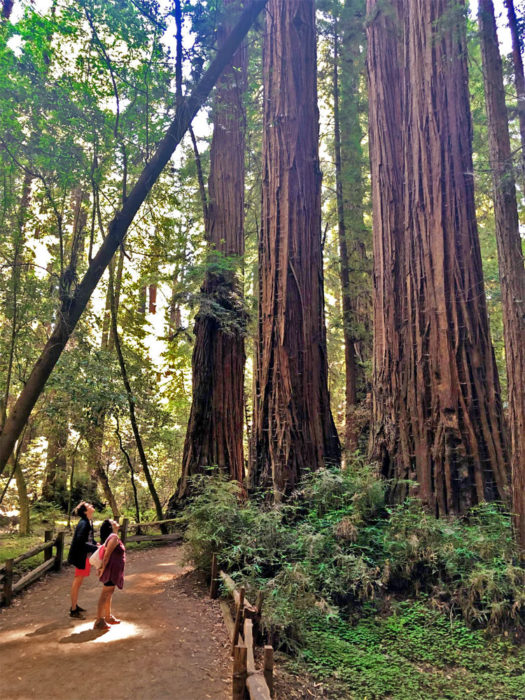
7. Watch your step
Don’t forget to occasionally look down at the forest floor. You may cross paths with the famous banana slugs that call the coast redwood forest home.
8. Look up
Do crane your neck upward now and then and try to fathom the heights of the giants before you. Grab your binoculars—you never know what you might spot high up in the redwood canopy (perhaps a northern spotted owl or a Humboldt flying squirrel).
9. Take it slow
In an ancient redwood forest, time seems to stand still. This is a great opportunity to slow down and take in the sights and sounds. With every step, feel the soft redwood needles beneath your boots. Listen for the call of the marbled murrelet. Witness the changing light as the minutes and hours pass by.
10. Enjoy
Of course, have fun! Plan your next redwoods adventure at ExploreRedwoods.org.

